 W
WThe history of the Jews in Belarus begins as early as the 8th century. Jews lived in all parts of the lands of modern Belarus. Jews were the third largest ethnic group in the country in the first half of the 20th century. In 1897, the Jewish population of Belarus reached 910,900, or 14.2% of the total population. Following the Polish-Soviet War (1919-1920), under the terms of the Treaty of Riga, Belarus was split into Eastern Belorussia and Western Belorussia, and causing 350,000-450,000 of the Jews to be governed by Poland. Prior to World War II, Jews remained the third largest ethnic groups in Belarus and comprised more than 40% of the population in cities and towns. The population of cities such as Minsk, Pinsk, Mahiliou, Babrujsk, Viciebsk, and Homiel was more than 50% Jewish. In 1926 and 1939 there were between 375,000 and 407,000 Jews in Belarus or 6.7-8.2% of the total population. Following the Soviet annexation of Eastern Poland in 1939, including Western Belorussia, Belarus would again have 1,175,000 Jews within its borders, including 275,000 Jews from Poland, Ukraine, and elsewhere. It is estimated 800,000 of 900,000 — 90% of the Jews of Belarus —were killed during the Holocaust. According to the 2019 national census, there were 13,705 self-identifying Jews in Belarus. The Jewish Agency estimates the community of Jews in Belarus at 20,000. However, the number of Belarusians with Jewish descent is assumed to be higher.
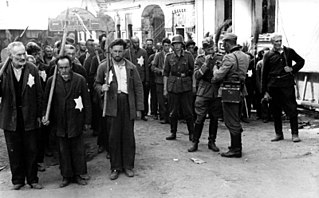 W
WThe occupation of Byelorussia by Nazi Germany started with the German invasion of the Soviet Union on 22 June 1941 and ended in August 1944 with the Soviet Operation Bagration. The western parts of the Byelorussian Soviet Socialist Republic became part of the Reichskommissariat Ostland in 1941, but in 1943 the German authorities allowed local collaborators to set up a client state, the Belarusian Central Rada, that lasted until the Soviets liberated the region.
 W
WGomel or Homyel is the administrative centre of Gomel Region and, with 526,872 inhabitants, the second-most populous city of Belarus.
 W
WHaradzeya is an urban-type settlement in Belarus, located in the Nyasvizh District of Minsk Region.
 W
WHolowczyn or Holovchin or Golovchin is a village in the Byalynichy Raion in the Mogilev Region in Belarus. The total population is 511 inhabitants. It is located 18 kilometers northeast of Belynichi and 26 kilometers from Mogilev.
 W
WKažan-Haradok is an agrotown in Belarus. The name may be transliterated in various other ways, including Kozhan Gorodok, Kozhanhorodok, Kazhan-Haradok, Kozhan-Grudek, Kazhaneradok, Kozhangrudek, Kurzanhradek. The town is located on the bank of the Tsna River, 4 kilometres (2.5 mi) from its confluence with the Prypiat River.
 W
WŁachwa Ghetto was a Nazi ghetto in Western Belarus during World War II. Located in Lakhva, Belarus), the ghetto was created with the aim of persecution and exploitation of the local Jews. The ghetto existed until September 1942. It was the location of one of the first Jewish ghetto uprisings.
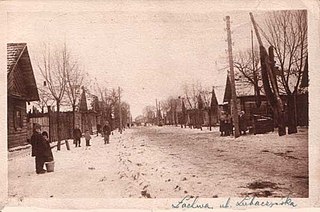 W
WLakhva is a small town in southern Belarus, with a population of approximately 2,100. Lakhva is considered to have been the location of one of the first, if not the first, Jewish ghetto uprisings of the Second World War.
 W
WLuninets is a town and administrative centre for the Luninets district in Brest Region, Belarus, before which it was in Poland and Russia and the Soviet Union. It has a population of some 24,000, and is immediately east of the Pinsk district within Brest. It was home to Luninets air base during the Cold War.
 W
WLiachavičy is a city in the southwestern Belarusian Brest Region.
 W
WMolchad is a village located on the Molchad River in the Baranovichy District of the Brest Region, Belarus. It is located in 33 km north-west from Baranovichi. The population of Molchad is 950 people and includes 330 households.
 W
WMotol, also Motal, is a township in Ivanava Raion of Brest Region located about 30 kilometres west of Pinsk on the Yaselda River in Belarus.
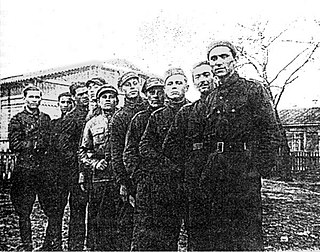 W
WThe Naliboki massacre was the 8 May 1943 mass killing of 129 Poles, including women and children, by Soviet partisans in the small town of Naliboki in German-occupied Poland.
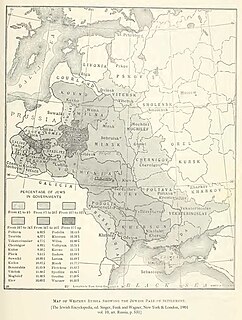 W
WThe Pale of Settlement was a western region of Imperial Russia with varying borders that existed from 1791 to 1917 in which permanent residency by Jews was allowed and beyond which Jewish residency, permanent or temporary, was mostly forbidden. Most Jews were still excluded from residency in a number of cities within the Pale as well. A few Jews were allowed to live outside the area, including those with university education, the ennobled, members of the most affluent of the merchant guilds and particular artisans, some military personnel and some services associated with them, including their families, and sometimes their servants. The archaic English term pale is derived from the Latin word palus, a stake, extended to mean the area enclosed by a fence or boundary.
 W
WThe Pinsk massacre was the mass execution of thirty-five Jewish residents of Pinsk on April 5, 1919 by the Polish Army. The Polish commander "sought to terrorize the Jewish population" after claiming to being warned by two Jewish soldiers about a possible bolshevik uprising. The event occurred during the opening stages of the Polish–Soviet War, after the Polish Army had captured Pinsk. The Jews who were executed had been arrested were meeting in a Zionist center to discuss the distribution of American relief aid in what was termed by the Poles as an "illegal gathering". The Polish officer-in-charge ordered the summary execution of the meeting participants without trial in fear of a trap, and based on the information about the gathering's purpose that was founded on hearsay. The officer's decision was defended by high-ranking Polish military officers, but was widely criticized by international public opinion.
 W
WPrazaroki is an agro-town in Vitebsk Region, Belarus.
 W
WSharkawshchyna is a town in Vitebsk Region of Belarus and the center of Sharkawshchyna District. The population is 6,900 (2010).
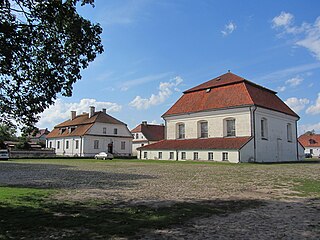 W
WA shtetl was a small town with a large Jewish population which existed in Central and Eastern Europe before the Holocaust. Shtetlekh were mainly found in the areas that constituted the 19th century Pale of Settlement in the Russian Empire as well as in Congress Poland, Austrian Galicia, Romania and Hungary.
 W
WThe Slutsk affair refers to the massacre of thousands of Jews and others that occurred in Slutsk, Belarus in the Soviet Union, in October 1941, near the city of Minsk while under German occupation during World War II. The perpetrators were a combination of Gestapo special forces and Lithuanian allies of the Third Reich. Nearly 4,000 Jews were murdered over a two-day period along with thousands of non-Jews.
 W
WMesivta Rabsa Eitz Chaim DiSlutsk, colloquially known as the Slutsk-Kletsk Yeshivah was an Orthodox Jewish yeshiva in Europe, founded in Slutsk, then part of the Russian Empire, and later moved to Kletsk in the Second Polish Republic, in 1897. The yeshiva was founded by the Ridvaz and famously led by Rabbi Isser Zalman Meltzer and Rabbi Aharon Kotler.
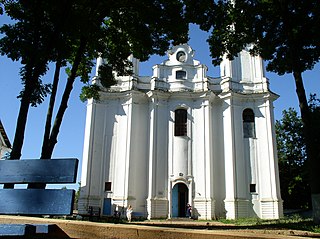 W
WTalachyn or Tolochin is a city in the Vitebsk Region of Belarus, an administrative center of the Talachyn district. It is perhaps the coldest city in Belarus in winter, with a record low of -42.2C.
 W
WYeshivas Etz Chaim Yeshiva-Volozhin commonly called the Volozhin Yeshiva, was a prestigious Lithuanian yeshiva located in the town of Volozhin, Russia,. It was founded by Rabbi Chaim Volozhiner, a student of the famed Vilna Gaon, and trained several generations of scholars, rabbis, and leaders. Completed in 1806, it was the first modern yeshiva to be established and became known as the "mother of all yeshivas," serving as a model for all later yeshivas which opened in Lithuania.
 W
WYeshivas Knesses Beis Yitzchak was an Orthodox Jewish yeshiva, founded in Slabodka on the outskirts of Kaunas, Lithuania, in 1897. The yeshiva later moved to Kamyenyets, then part of Poland, and currently in Belarus, and is therefore often referred to as the Kaminetz Yeshiva or simply Kaminetz. The yeshiva was famously led by Rabbi Boruch Ber Leibowitz.
 W
WThe Dzyatlava Ghetto, Zdzięcioł Ghetto, or Zhetel Ghetto was a Nazi ghetto in the town of Dziatłava, Western Belarus during World War II. After several months of Nazi ad-hoc persecution that began after the launch of Operation Barbarossa, the invastion of the Soviet Union, the new German authorities officially created a ghetto for all local Jews on 22 February 1942. Prior to 1939, the town (Zdzięcioł) was part of Nowogródek Voivodeship of the Second Polish Republic.